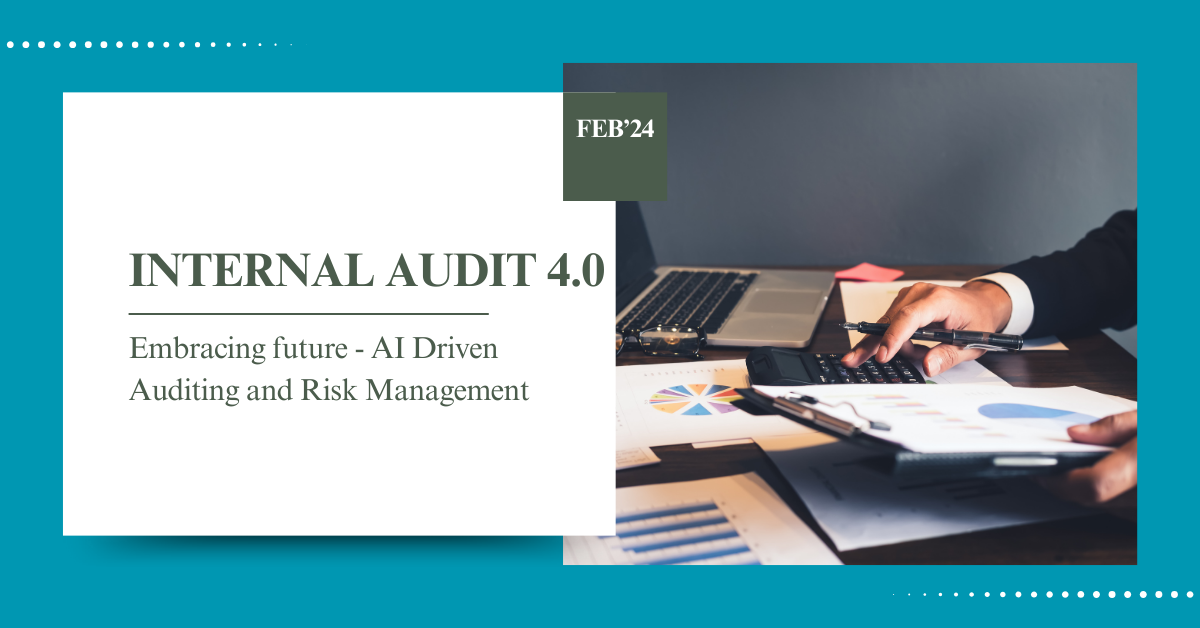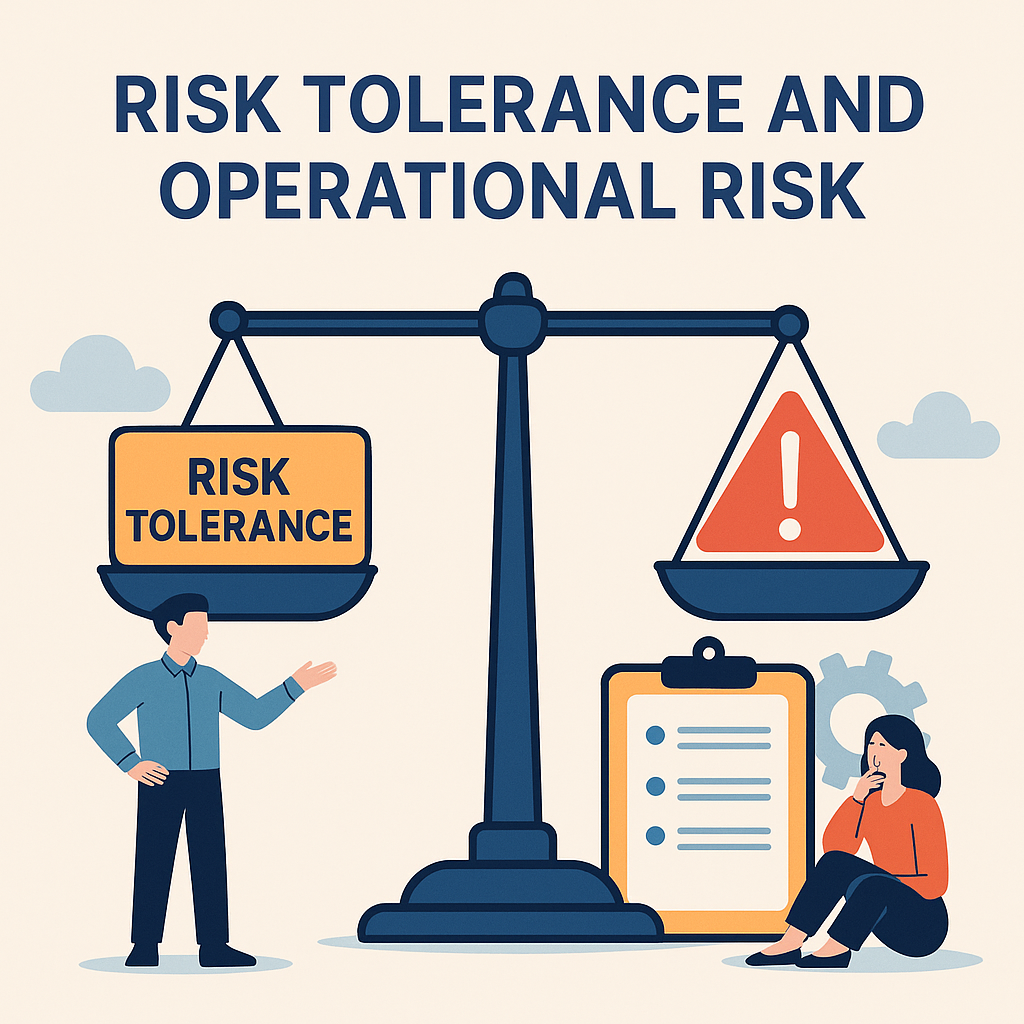Introduction
The landscape of internal auditing is evolving rapidly, driven by technological advancements, increasing regulatory complexities, and changing stakeholder expectations. Traditional internal audit functions are no longer sufficient to address the modern business environment’s growing risks and challenges.
Enter Internal Audit 4.0, a forward-thinking approach that integrates digital technologies, automation, and proactive risk management strategies to enhance efficiency and effectiveness. As per the internet sources, it was initially started by Deloitte. They published an article on the concept of IA 4.0.
Understanding Internal Audit 4.0
Internal Audit 4.0 represents a paradigm shift from traditional, reactive audit approaches to a proactive, technology-driven model. It focuses on real-time risk assessment, leveraging digital tools like AI, robotic process automation (RPA), advanced data analytics, and blockchain to drive greater transparency, accuracy, and strategic decision-making.
Internal audit 4.0 is purpose-driven, digitally powered concept.
Key Characteristics of Internal Audit 4.0
- Automation & AI-driven insights: Automated data analysis and predictive risk modeling enhance audit efficiency.
- Continuous auditing: Real-time monitoring of transactions and controls replaces periodic reviews.
- Data-driven decision-making: Analytics and AI help auditors extract meaningful insights from vast datasets.
- Enhanced collaboration: Integration with other business units strengthens risk management strategies.
- Agility and adaptability: Auditors can swiftly respond to emerging risks using dynamic risk assessments.
Example:
A global retail company integrated AI-driven anomaly detection into its internal audit processes. By using machine learning algorithms, the company identified unusual transaction patterns in real-time, reducing fraud-related losses by 30%.
The Evolution: From Internal Audit 1.0 to 4.0
Now let us take ourself back in time and understand how internal audit started and come to the concept of merging it with digitally powered and purpose driven function within an organization.
Internal Audit 1.0 – The Compliance Era
- Focused on financial accuracy and regulatory compliance.
- Manual audit processes with limited scope.
Internal Audit 2.0 – Risk-Based Auditing
- Emphasis on risk management and internal controls.
- Use of IT tools for documentation and reporting.
Internal Audit 3.0 – Strategic Assurance & Advisory
- Shift towards advisory services and business insights.
- Enhanced use of analytics for identifying operational risks.
Internal Audit 4.0 – Digital Transformation & Real-Time Auditing
- AI-driven analytics, predictive modeling, and process automation.
- Proactive risk anticipation rather than retrospective analysis.
- Integrated audit methodologies with enterprise-wide visibility.
If we have to summarize the journey of internal audit function within an organization, it has come a long way of being perceived as a detective control to an intelligent control. With use of digital innovation, things are moving much faster than we can anticipate. New tools and new ways of doing or executing things are coming into the picture.
How Internal Audit 4.0 is Revolutionizing Businesses?
Let us understand how businesses are getting impacted with the concept of Internal Audit 4.0. We will try to brief the concepts with example for better understanding. This will give us an idea on practical scenarios.
1. AI & Automation for Audit Efficiency
By automating repetitive tasks like reconciliation, exception reporting, and data extraction, auditors can focus on strategic risk analysis and advisory roles.
Example: A financial services company implemented AI-based chatbots to analyze compliance queries and flag potential violations, reducing manual audit review time by 40%.
2. Blockchain for Transparency & Security
Blockchain technology enhances audit trails, fraud detection, and data integrity by providing an immutable ledger of transactions.
Example: An insurance firm utilized blockchain-powered smart contracts to audit claim settlements, significantly reducing discrepancies and manual verification efforts.
3. Data Analytics for Risk Prediction
Predictive analytics helps auditors identify trends and anomalies before they escalate into significant risks.
Example: A multinational corporation used data visualization dashboards to monitor supplier payment trends, allowing internal auditors to flag irregularities and prevent financial losses.
4. Cybersecurity Audits for Digital Resilience
With rising cyber threats, Internal Audit 4.0 plays a crucial role in assessing cyber risk exposure, security protocols, and incident response readiness.
Example: A healthcare provider leveraged AI-driven cybersecurity risk assessments to detect vulnerabilities in patient data access, preventing potential breaches.
Challenges in Adopting Internal Audit 4.0
While Internal Audit 4.0 brings transformative benefits, organizations face several challenges:
- High implementation costs for advanced technologies.
- Skill gaps requiring auditors to be proficient in data analytics, AI, and cybersecurity.
- Change resistance from traditional audit teams accustomed to manual processes.
- Data privacy and compliance concerns in automated auditing environments.
Solution:
Organizations should invest in upskilling internal audit teams, foster a culture of digital adaptation, and adopt a phased implementation approach to Internal Audit 4.0. It is always helpful for an internal audit function to prepare a technology adaptation roadmap that aligns well with business growth and objectives.
Conclusion
Internal Audit 4.0 is not just a technological upgrade but a strategic shift towards a more proactive, intelligent, and value-driven audit function. By integrating AI, blockchain, automation, and predictive analytics, businesses can ensure real-time risk management, improved compliance, and enhanced governance.
The future of internal audit lies in embracing innovation, leveraging digital capabilities, and fostering a culture of continuous improvement. As organizations transition to Internal Audit 4.0, those that proactively invest in technology and skills development will gain a competitive edge in mitigating risks and optimizing performance.
References
- Deloitte – The Future of Internal Audit: Embracing Technology
- KPMG – The Evolving Role of Internal Auditors
- PwC – Internal Audit 4.0: The Next Generation
- The Institute of Internal Auditors (IIA) – Global Internal Audit Standards
- Harvard Business Review – AI & Automation in Risk Management









